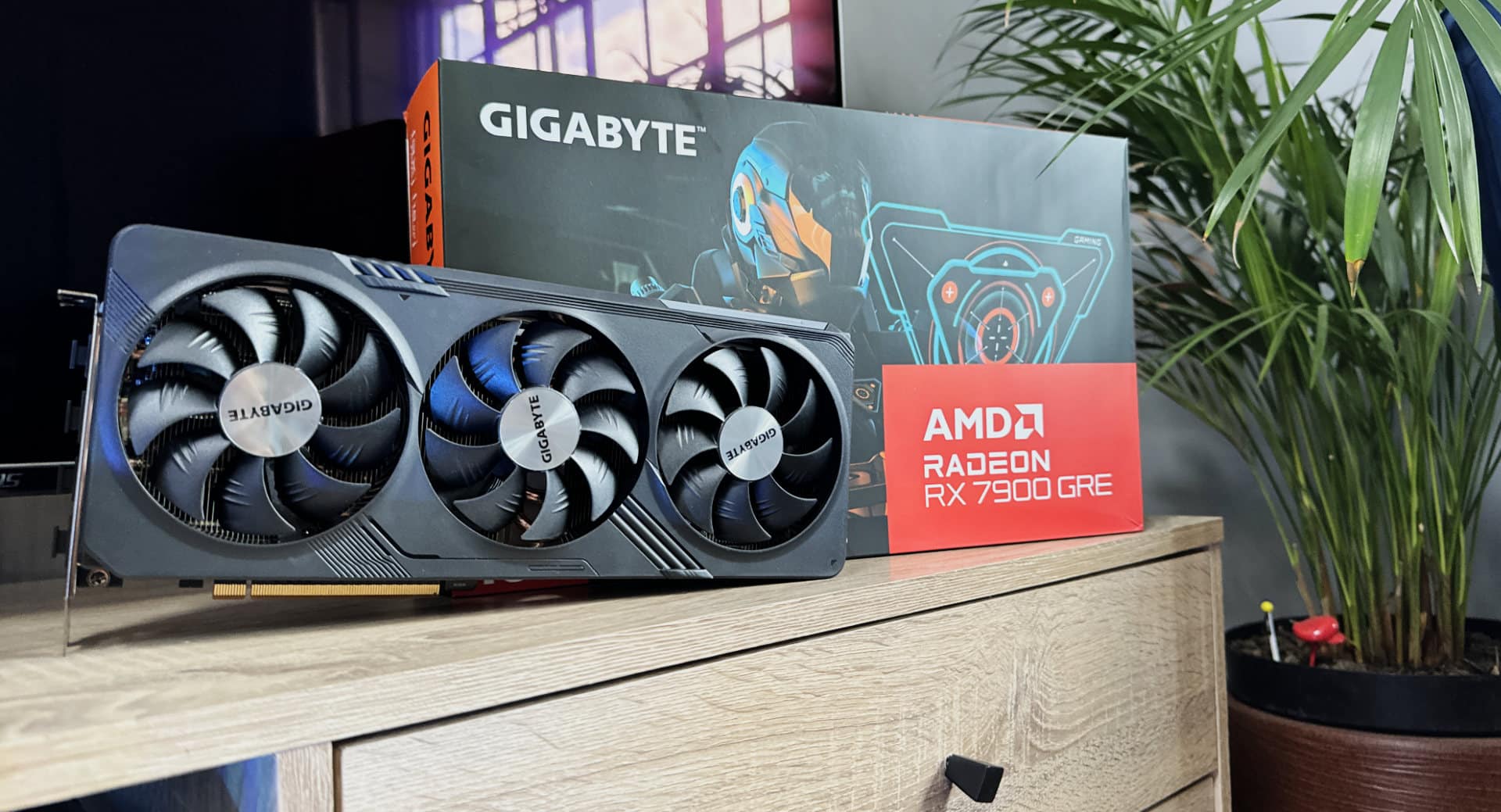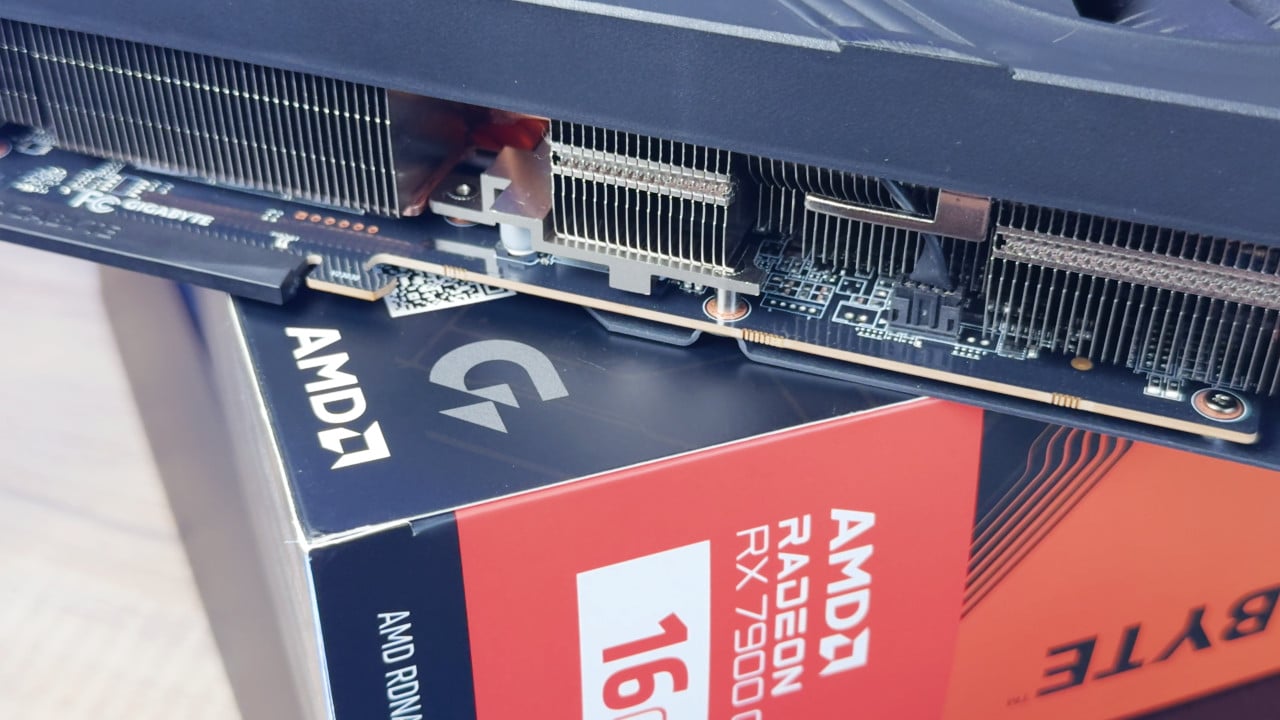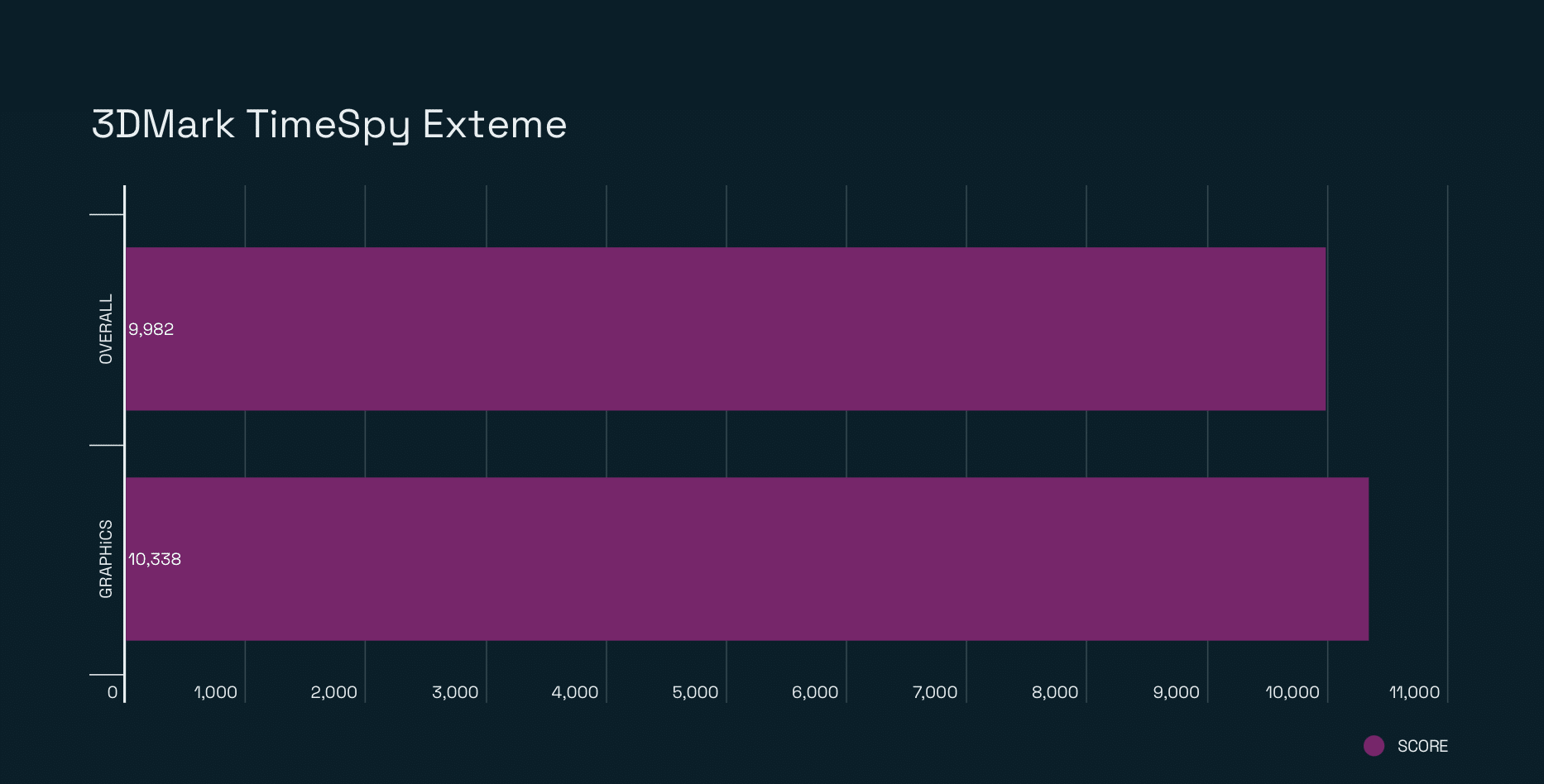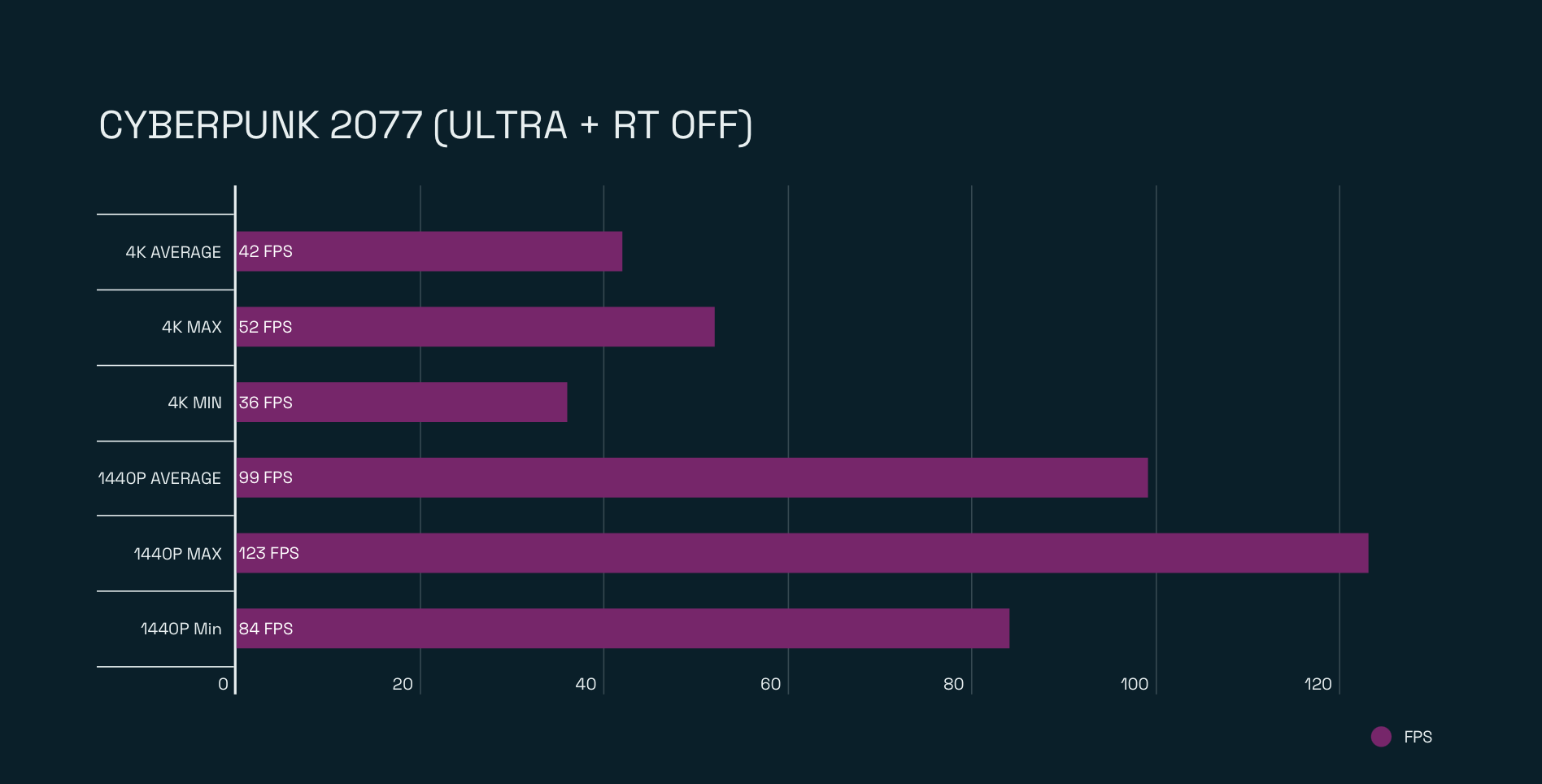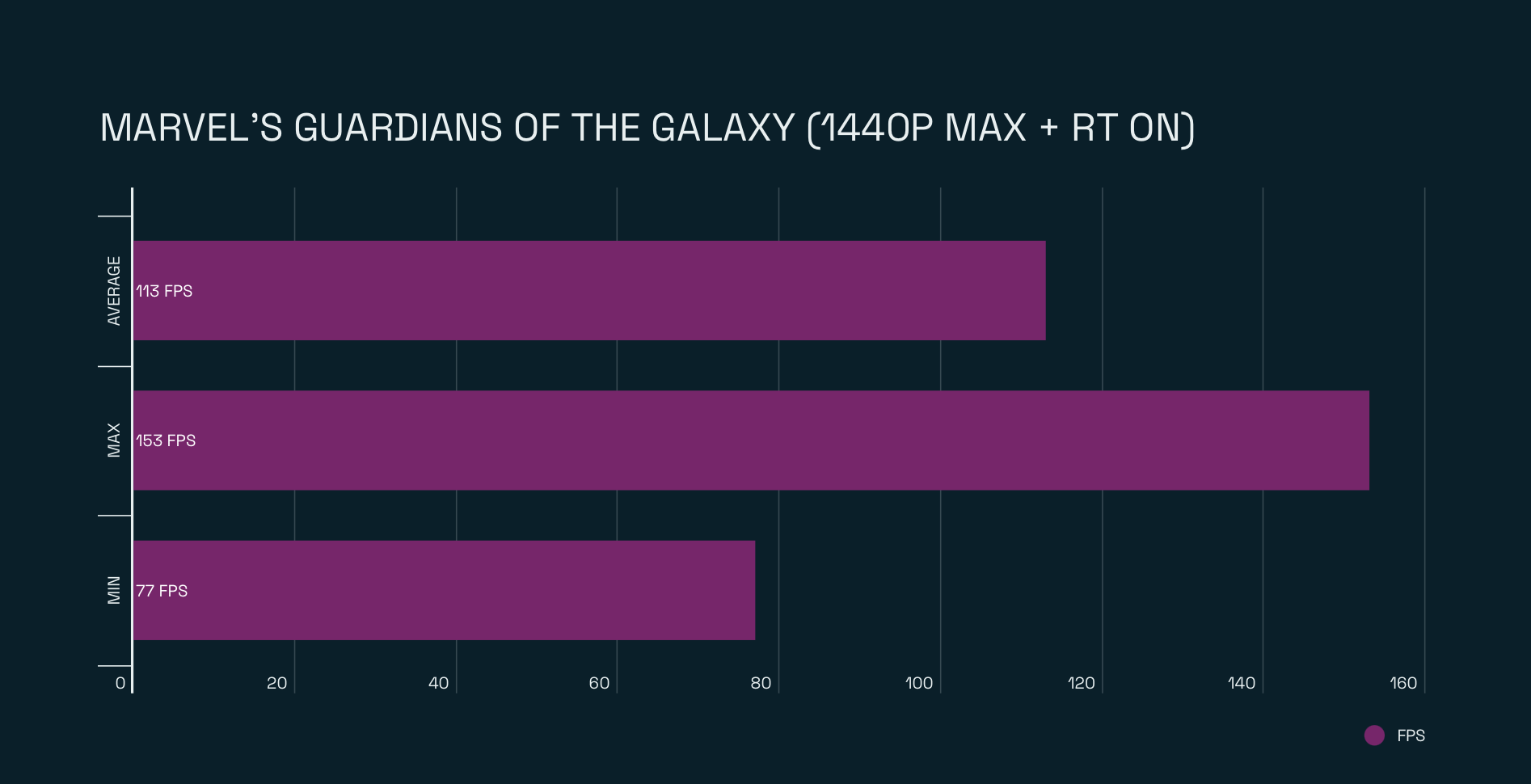AMD’s latest RX 7900 GRE GPU has arrived just a few weeks after the latest batch of 40-series GPUs from NVIDIA. Namely the RTX SUPER range. However, while the NVIDIA SUPER range is still seen as the high-end and more expensive model, the new AMD RX 7900 GRE wants to slide into your DMs and prove you can get similar performance from it for a fraction of the price.
Watch the Gigabyte AMD Radeon RX 7900 GRE Gaming OC review:
That’s where this Gigabyte AMD Radeon RX 7900 GRE Gaming OC model comes in. This is Gigabyte’s variation of the AMD RX 7900 GRE and packs all the similar specs and features alongside a slightly overclocked Game and Boost Clock.
The Game Clock comes in at 2391MHz compared to the reference card at 2245MHz and the Boost Clock comes in at 2052MHz instead of 1880MHz on the reference card.
This specific RX 7900 GRE is targeting the RTX 4070 in terms of its specs and performance. Of course, the GPU comes with 16GB of RAM compared to 12GB on the RTX 4070. It also requires a bigger power supply at 700W due to its 260W power draw. AMD is also shipping these RX 7900 GRE cards with future-proof DisplayPort 2.1 ports capable of 4K at up to 480Hz with HDR enabled. So the company is clearly doing things better in some regard.
However, the big elephant in the room is AMD’s snail-pace rollout of its FSR 3 tech which is also meant to rival NVIDIA’s incredible DLSS 3 upscaling. So again, there are some hits and some misses here. But if you’re here for this review, you just want to see how this card performs and I have all the tests for you but let’s first go over this specific card itself.
Gigabyte AMD Radeon RX 7900 GRE Gaming OC Design
The Gigabyte AMD Radeon RX 7900 GRE is the Gaming OC edition. It is one of many variants you can get from Gigabyte. It is a fairly large card that comes in at 302mm by 130mm and is 56mm thick. It features the classic Gaming OC stylings including the black and grey shell with an RGB Gigabyte logo in the centre. You can tweak the logo RGB in the Gigabyte Contol centre.
The card requires 2 8-pin PCI-E power cables which slide into the ports on the one end. The GPU also includes 3 90mm fans which make up the Windforce cooling system on the card. The cooling system also includes 7 composite heat pipes and a large copper plate which Gigabyte says directly touches the GPU to help with thermals. It all works together to keep this card cool.
The fans spin together with the centre fan taking a reverse rotation to send heat from the front to the back where it exits from the screen cooling vent. The last AMD card I reviewed from Gigabyte sounded like a plane flying over my house so I hope this one is a little better.
When picking this card up, you’ll get the GPU in the box and nothing else. No adapters, no motherboard mounts either. Just the card and a warranty booklet.
The card looks nice. It is a good size to fit in most cases and it isn’t too heavy either. Likely why Gigabyte doesn’t include a motherboard mount with the GPU in the box. Overall, the card looks and feels like any other Gaming OC variant. The black styling will fit into your case nicely if you have a black case. If you’re into white, you may want to look at the Aero model instead.
Gigabyte AMD Radeon RX 7900 GRE Gaming OC Performance
AMD is targeting 1440p gaming with this Radeon RX 7900 GRE GPU. With the help of FSR, users may be able to get more out of the card but that is all on a case-by-case basis. The card includes 16GB of GDDR6 memory across its 256-bit bus. It also includes 64MB of AMD’s Infinity Cache.
As for the cores, the RX 7900 GRE includes 5120 cores. This is an impressive number given that the RX 7900 XT, which is substantially more expensive, includes only 5% more cores with 5376 cores. Sure, that card is from 2022 and includes better memory specs and a faster GPU Clock Speed but it goes to show how much value you’re getting in this current card.
I ran some tests on the Gigabyte AMD Radeon RX 7900 GRE Gaming OC to see where exactly this GPU fits into the grand spectrum of things.
My 3DMark TimeSpy tests showed that the Gigabyte AMD Radeon RX 7900 GRE is 5% faster than NVIDIA’s RTX 4070 which is kind of impressive given the 4070 is more expensive. However, when testing out raytracing in the Portal Royal tests, the 4070 beat the RX 7900 GRE. But it was only by 5%. This was expected. AMD has kind of fallen behind when it comes to raytracing but tests show the company is slowly catching up.
I then ran gaming benchmarks to position the card alongside previous RTX 4070 tests I ran. While AMD does treat this card at a 1440p model, I wanted to test out 4K at the same time to see where we can go with it. Of course, I also did 4K tests with FSR where available because those games are likely the ones where you’ll use the settings.
First, we have 1440p and 4K tests without any upscaling at all. These games were all running on the best possible settings. Raytracing was enabled across select games. I have listed which ones.
You can see from the tests that this card handles 1440p games quite well. In fact, they performed excellently. When stepping over into 4K, it struggles a bit with the more demanding titles. And I use the word “struggle” loosely here. The card still manages to play most games at a reasonable frame rate.
Nothing is stopping you from playing say Returnal at 70FPS in 4K. I know PC gamers love crazy high refresh rates but sometimes, 4K at 60FPS is a pretty reasonable middle-ground for games. This AMD RX 7900 GRE can deliver that without question.
Where the card does struggle is when ray tracing comes into play. There’s a noticeable performance drop across games. Sure, this is something we can expect on all GPUs but you’ll need to tackle each game’s raytracing on a case-by-case basis.
For example, Cyberpunk 2077 at 4K with raytracing wasn’t playable. Take it down to 1440p and it is somewhat playable but 30FPS just isn’t ideal here. You’ll have to make use of some aggressive FSR 3 to get this game running comfortably on this card. Returnal, on the other hand, managed at 4K with a decent-ish 45FPS. At 1440p, it was simply much better, of course.
You can look at FSR to help boost this performance where possible but I wanted to run tests without the upscaling enabled to show the raw power on offer here. I use an RTX card myself and I try to disable DLSS wherever possible to bypass the often-reduced image quality. FSR suffers from this more than DLSS so I wouldn’t look at FSR as an option to increase performance, personally speaking of course.
FSR 3 is also an option. Avatar is one of the games to feature FSR 3 support and you can see from the tests, it does provide a welcome performance boost. However, is does degrade the image quality as expected.
Throughout my testing, the card remained quite cool. I only measured a max temperature of 64C which is rather impressive. I was also happy to hear that the card makes a lot less noise than I expected. If anything, it is pretty silent. I could barely hear the fans over my water cooler which was saying something. This was with the card’s fans maxed out at 2050RPM and the card using 290W of power. The clock speed was also at 2383MHz
In the end, the Gigabyte AMD Radeon RX 7900 GRE Gaming OC GPU did surprise me. The card comes with some impressive performance out of the box and upscaling AI stuff aside, there’s raw power here that can carry 1440p games and some 4K ones too. You have to compare what you’re getting here for its price tag and put it next to its closest competition, which includes other AMD cards, there’s definitely great value here.
Sure, it does fall short at times when it comes to the ray tracing performance but unless you obsess over these settings, you’ll likely be fine with what this card can deliver. I really thought I was going to come out of this review being disappointed but in fact, I am impressed AMD has the balls to release something cheaper and better than its direct competition. If anything, the company is pushing aside its own RX 7900 XT to offer similar value at a lower price tag. If only Team Green would do the same thing.
This Gigabyte AMD Radeon RX 7900 GRE Gaming OC review is based on a unit sent to us by Gigabyte. The card is now available starting from R18.999.
The Gigabyte AMD Radeon RX 7900 GRE Gaming OC review
Summary
The Gigabyte AMD Radeon RX 7900 GRE Gaming OC is a capable GPU that handles 1440p games and some 4K ones. It might slightly struggle with raytracing but its power and value make up for some of the few shortcomings on offer.

